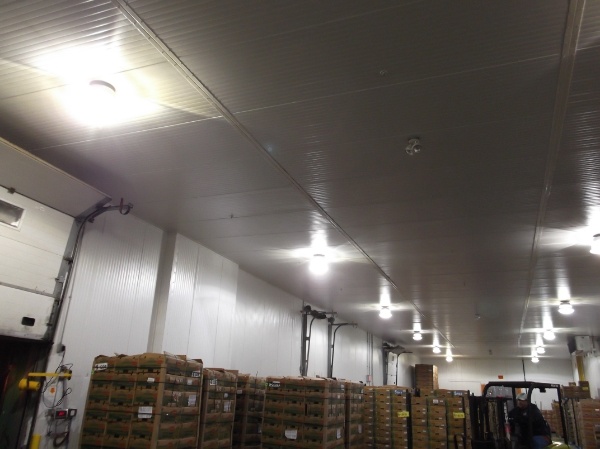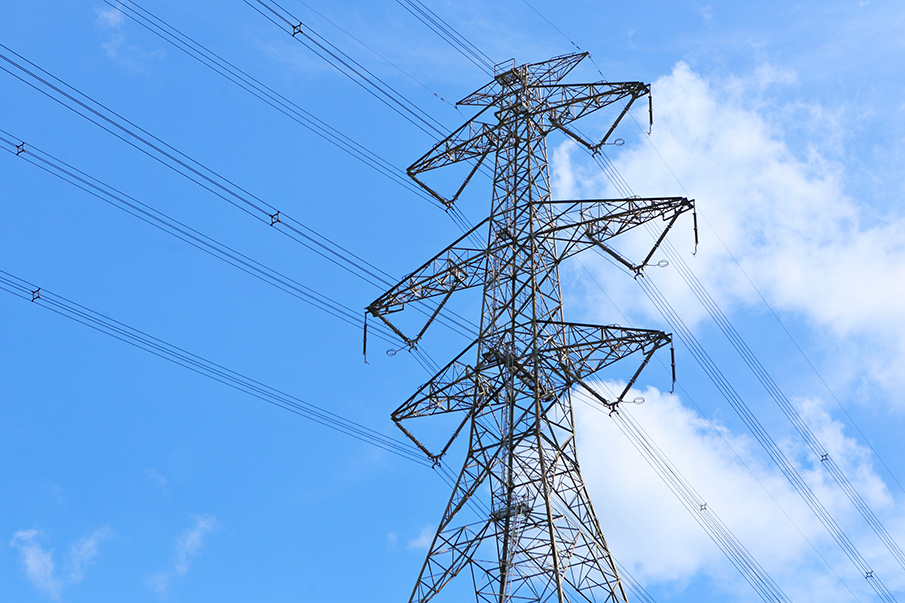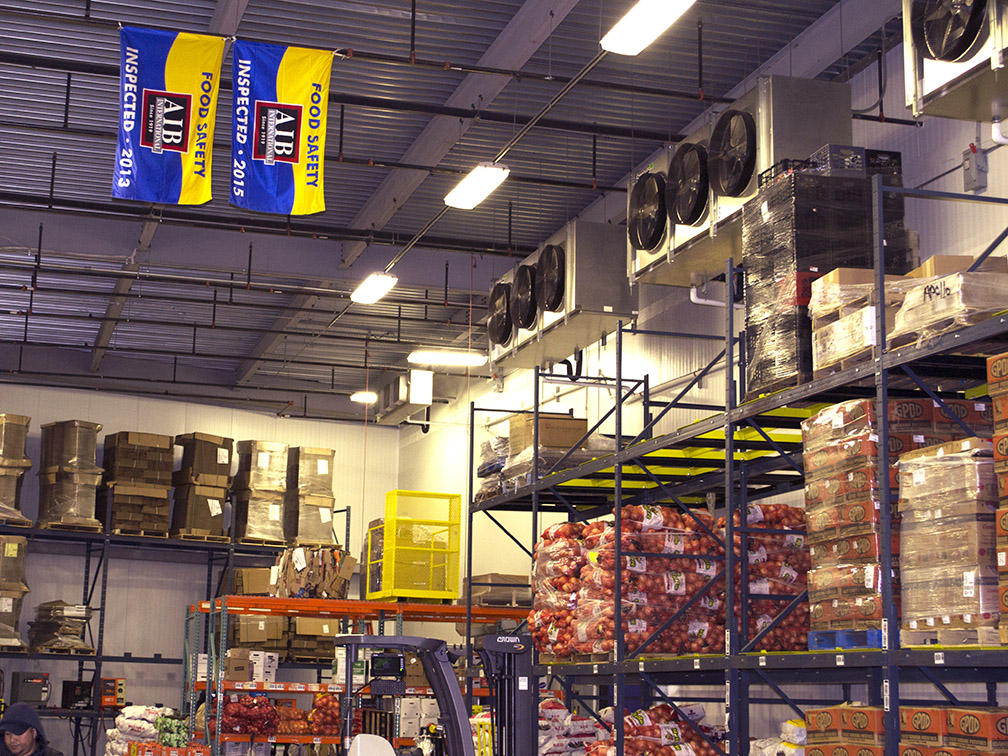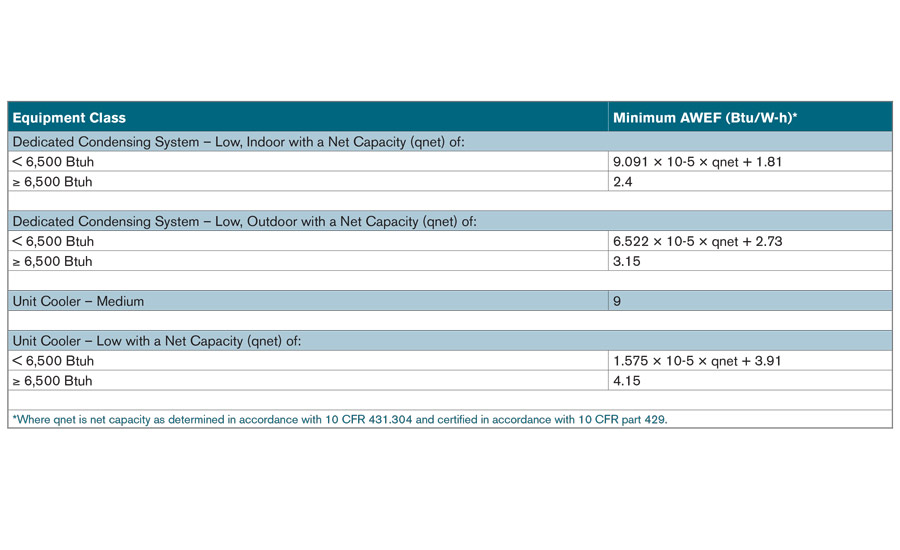In the first part of this introductory series to the ins and outs of refrigerated spaces, we dove into the varying classifications out there and which temperature ranges really affect which spaces. In the second part, we will look at the different types of lighting we’ve seen in our twenty years of working with commercial refrigeration, and break down each one’s positive and negative impacts on energy efficiency for refrigerated spaces.
The most common question we come across, as it pertains to this topic, is simply: what is the best light for my refrigerated space?
Before qualifying any answer to that question, it’s important that we are aware of our goals of the lighting solution we’re after. Is the goal to have the best performing lighting fixtures regardless of ancillary effect? Is the goal to find the most cost-efficient solution? Maybe you have even more specific goals. This is why we think it’s important to approach each type of lighting with consideration of its cost, performance, energy savings, and controllability.
The lighting solutions we will evaluate from these perspectives are: fluorescent, metal halide, high-pressure sodium, and LED.
Now, we know it’s easy to immediately jump to the conclusion that LED solutions are just too costly of investments upfront but their long-term cost of ownership and efficiency improvements over the other fixtures may actually surprise some people.
On to the breakdown!
Fluorescent
Fluorescent lighting fixtures are time-withstanding, proven solutions for most spaces when considering their overall cost, performance, energy savings, and controllability.
In a nutshell, fluorescent lights work by having electric currents heat low pressure-mercury vapor to produce ultraviolet light that then causes a phosphor coating in the bulb to glow.
But fluorescent fixtures only remain a great solution if they operate within a system that stays within the light’s rated temperature range. In refrigerated spaces—especially frozen storage and walk-in freezers—the environments are consistently at lower temperature ranges than fluorescent’s ideal ranges. As a result, their energy savings and controllability, which directly affects the fixture’s performance, can drop significantly.
“Fluorescent lamps start with more difficulty at lower temperatures because the mercury vapor pressure is lower, thus there is less mercury available to start the lamp. The light output is lower because the mercury is not emitting the optimum amount of ultraviolet energy for the phosphor to convert to visible light.” ¹
“At low temperatures, a higher voltage is required to start fluorescent lamps and luminous flux is decreased.” ²
Relative Light Output
AMBIENT TEMP (ºC) | OPEN FIXTURE | CLOSED FIXTURE |
-10 (14°F) | 25% | 50% |
0 (32°F) | 50% | 80% |
10 (50°F) | 80% | 100% |
25 (77°F) | 100% | 98% |
The impact of temperature on an FL system may be corrected somewhat through the use of amalgam lamps and cold start ballasts.
“The use of amalgam (an alloy of mercury and other metals that is used to stabilize and control mercury pressure in the lamp) largely addresses this problem. . . ” ²
However, amalgam lamps require longer start up times (3 minutes or more) to achieve full brightness making this solution a difficult consideration when including it in any control scheme.
Conclusion:
- “Operating fluorescent lamps in cold or hot environments will lead to reduced light output, reduced power, and reduced efficacy, . . . ” ³
- This may be corrected through the use of special lamps and cold start ballasts but controllability becomes an issue and oversight on any procurement of these non-standard lamps and ballasts may occur.
Metal Halide
Metal halide is also a very good lighting solution when only accounting for basic upfront cost and initial performance.
These lighting fixtures produce light by an electric arc that passes through a gaseous mixture of mercury vapor and halides (metal compounds containing bromine or iodine).
However, something to keep tucked away: metal halide fixtures have the highest lumens depreciation of the four types of lighting solutions, making its performance short-lived. Couple this fact with higher wattages, higher heat loads (for refrigerated spaces), shorter life ratings, and challenges in controllability, and metal halide becomes an increasingly poorer option for a solution that can both perform and positively affect your bottom line.
“In cold storage environments, High Intensity Discharge (HID) and fluorescent fixtures are typically left on 24 hours per day, 7 days per week, 365 days per year. While it seems wasteful, it is generally necessary because fluorescent lights have a long warm up period in cold environments, and HIDs require cool down periods between starts, which eliminates the ability to turn fixtures off. Because of the inherent productivity losses due to these shortcomings with traditional lighting sources, there has never really been a viable option to constantly leaving the lights on – until now.”5
“HID lamps have even longer warm up times, ranging from several minutes for metal halide to ten minutes or more for high-pressure sodium (HPS). HID lamps also have a restrike time delay; if turned off, they must be allowed to cool before turning on again, usually for 2 to 20 minutes, depending on the ballast.”²
Conclusion:
- Limited energy story.
- Highest lumen depreciation.
- Short life span.
- Long warm up and restrike times make ease of control a non-factor.
- Adds heat load to space thus increasing added kWh demand on refrigeration.
High Pressure Sodium
Another solution that looks really appealing when factoring in upfront cost and initial performance, are high pressure sodium HID fixtures.
High pressure sodium fixtures produce light through gas-discharge of sodium in an excited state. These sodium bulbs are relatively efficient, have better depreciation than metal halide fixtures, and are ideal solutions for outdoor applications. But the fixture’s lacking color spectrum makes it a tougher fit indoors and in situations where color recognition is required.
Combine this fact with the same higher wattages as other HID fixtures, higher heat load for the space, controllability issues, and an extremely low CRI, high pressure sodium fixtures are probably not a great fit for your refrigerated space.
Take, for example, this statement from the International Packaged Ice Association in their Packaged Ice Quality Control Standards protocol:
“Adequate lighting shall be provided in all areas where ice is manufactured, processed, packaged, or stored to facilitate handling and inspection of the product, cleanup and repair of the building, equipment and utensils.”4
… “to facilitate handling and inspection of the product, cleanup, and repair of the building, equipment, and utensils.” – Consider the challenges for a facility lit with HPS fixtures.
Can employees efficiently perform those tasks under a yellow, extremely low-CRI light? Can they maintain all necessary safety and quality standards?
Let’s say, “yes, they can” and now the finished product is moved into a frozen storage warehouse (after packing and inspecting) where the space is lit by a 400w HPS that runs 24/7. When factoring in the energy costs of both of these HPS solutions, one can see that initial performances are quickly trumped by the added challenges on the refrigeration load (in this example).
Conclusion:
- Limited energy story.
- Extremely low CRI.
- Shorter life span.
- Long warm up and restrike times make ease of control a non-factor.
- Adds heat load to space thus increasing added kWh demand on refrigeration.
LED
LED fixtures consist of light-emitting diodes, which emit light when a suitable voltage is applied and electrons fill electron holes in the device causing energy to be released in the form of photons. Despite a typically higher upfront cost, LED solutions continue to prove themselves as the most efficient and positively impactful fixture on your bottom line.
The advantages that LED solutions bring are numerous: lower energy consumption, longer life rating, improved physical robustness, smaller size, and faster on/off switching.
Comparison of a typical FL Highbay to NRM’s LED Highbay:
Fixture | Watts | Lumens @ 77° F | Lumens @ 32° F | |
Existing (open) | 4L T5HO HB | 234 | 16,616 | 8,308 |
Proposed LED | ES3P-4MS | 88 | 13,335 | 13,335 |
Comparison of a typical MH Highbay to NRM’s LED Highbay:
Fixture | Watts | Lumens @ day 1 | Lumens after 1 year | Lumens after 3 years | Group Re-lamps during Life of LED | |
Existing | 400W MH HB | 455 | 28,933 | 20,253 | 14,467 | ~ 10 |
Proposed LED | ES3P-4M | 176 | 26,670 | 25,781 | 24,003 |
|
** Numbers above reflect an actual site with annual operational hours at 24 hrs (5 days/wk) and 10 hrs on Sat.
This only scratches the surface on LED fixtures and their improvements in both lifetime cost of ownership and energy efficiency over other lighting solutions.
- Sylvania FAQ 0008-1296: Cold Temperature Operation of Fluorcent Systems
- UDOE Solid-State Lighting Technology Fact Sheet
- Lighting Research Center: High-Wattage Compct Fluorescent Lamps
- Howard Lighting Products: HID Lamp Service Guide
- Global Cold Chain Alliance: Cold Facts




